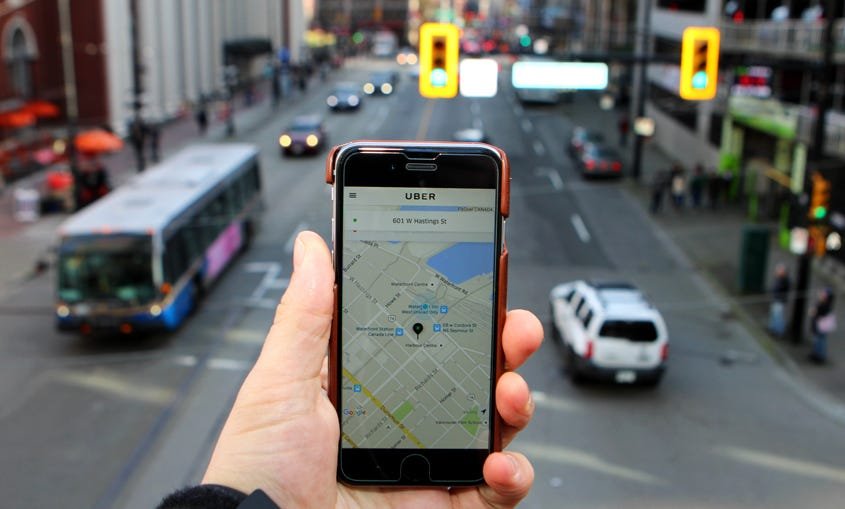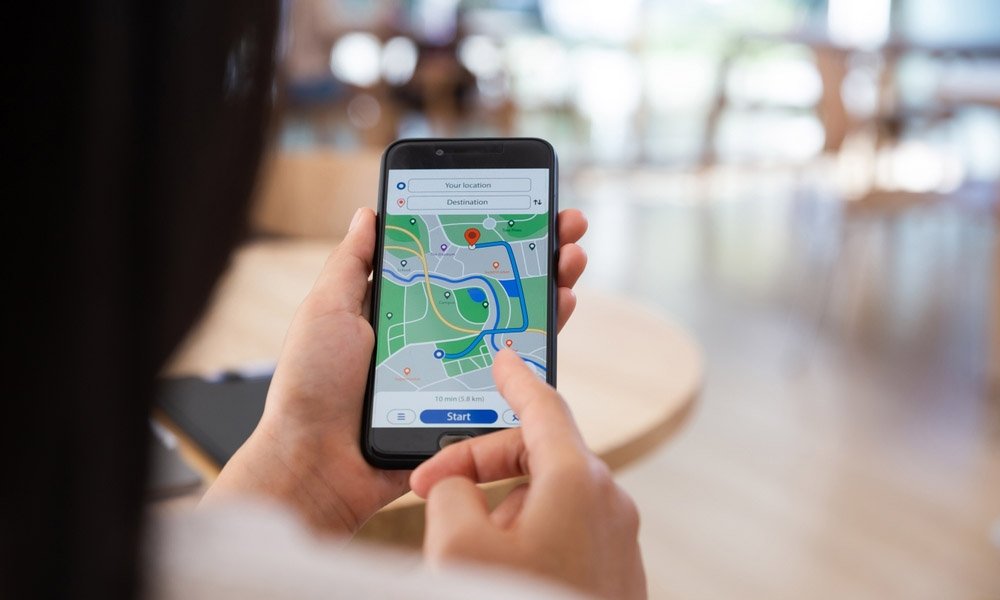Ride-sharing apps have revolutionized the way we think about transportation. Gone are the days of hailing a cab or waiting for a bus. With just a few taps on a smartphone, people can now get a ride to their destination in minutes. This innovation has had a significant impact on the transportation industry, reshaping the way we travel, the environment, and even the economy. In this post, we’ll explore how ride-sharing apps are changing transportation for the better.

Convenience and Accessibility
One of the most obvious ways that ride-sharing apps are changing transportation is through their convenience and accessibility. With a simple app, riders can request a ride from their location and be picked up in minutes. No more waiting for buses or taxis or worrying about finding a parking spot. Ride-sharing services operate 24/7, meaning that people can rely on them at any time of day or night. Additionally, these apps are available in many cities worldwide, making them an accessible transportation option for people from all walks of life. Whether you’re in a major city or a smaller town, chances are there’s a ride-sharing app near you.
Connecting Users with Quality Resources and Exclusive Entertainment
Directory-Direct helps users discover trusted businesses and valuable online resources with ease. For a premium online experience filled with excitement, visit Casino VIP Wolfwinner and enjoy exclusive gaming entertainment.
Cost-Effectiveness
Transport-sharing apps have made transportation more affordable for many people. While traditional taxi fares can be high, ride-sharing services typically offer lower rates, especially for short trips. Additionally, ride-sharing platforms allow passengers to split fares with other riders, making it even more affordable. Many apps also offer ride-sharing options where passengers can share their ride with others heading in the same direction, reducing the overall cost of the trip. The transparent pricing model of ride-sharing apps ensures that passengers know how much they will pay upfront, eliminating surprise charges.
Reduced Traffic Congestion
By using ride-sharing apps, fewer people rely on private cars for daily travel, helping to reduce traffic congestion. As more people opt for shared rides, the number of cars on the road decreases, leading to less crowded streets and faster commutes. Ride-sharing apps have also introduced carpooling options, where multiple passengers heading in the same direction can share a single vehicle. This helps maximize the number of people per car, further reducing the number of vehicles on the road. In cities with high traffic volumes, this shift has had a noticeable impact on reducing congestion and improving travel times.
Directory-Direct and Online Entertainment
Directory-Direct.com appears to be a website that organizes and lists various businesses, services, or resources. For a different kind of experience, explore options like real money casino games. Stay updated on directory services and leisure activities.
Environmental Impact
Ride-sharing apps play a crucial role in promoting more sustainable transportation options. Fewer cars on the road means reduced greenhouse gas emissions, making ride-sharing a greener alternative to individual car ownership. Additionally, many ride-sharing platforms are investing in electric vehicles (EVs) to further reduce their carbon footprint. By shifting from gas-powered cars to EVs, ride-sharing services can lower emissions and contribute to cleaner air in urban areas. Moreover, ride-sharing options like carpooling and shared rides can reduce the overall number of trips taken, further benefiting the environment.
Online Directories and Digital Entertainment
Directory-Direct.com appears to be a business directory, and for those seeking other forms of digital engagement, exploring options like kingjohnnie.me can provide a different kind of experience. Whether it’s finding local businesses or exploring online games, diverse activities enrich our lives.
Flexibility for Drivers
Ride-sharing apps not only benefit passengers but also offer flexibility for drivers. Drivers can choose when and where they want to work, allowing them to earn money on their own schedule. This level of flexibility has attracted many individuals to the gig economy, where they can supplement their income or even make a full-time living. Ride-sharing platforms also provide drivers with the opportunity to use their own vehicles, eliminating the need for large upfront investments in a traditional taxi service. This flexibility is a key factor in the success of ride-sharing apps, making them an attractive option for both passengers and drivers.
Technological Innovations
Ride-sharing apps have been at the forefront of technological innovation in transportation. From GPS tracking and real-time ride updates to cashless payments and driver ratings, these apps have integrated advanced technology to make the process more efficient and user-friendly. For example, apps use algorithms to match riders with drivers, optimizing routes and minimizing wait times. In addition, ride-sharing platforms are now incorporating artificial intelligence and machine learning to improve the customer experience, predict demand patterns, and enhance overall service quality. The continuous evolution of technology will ensure that ride-sharing apps remain a significant part of the future of transportation.
Connecting Businesses and Services Efficiently
Directory-Direct provides a comprehensive platform for discovering and listing businesses and services across various industries.
For users interested in interactive online experiences, platforms offering online sports betting provide an engaging complement.
Integrating such links thoughtfully ensures they enhance the directory experience without distracting from its core purpose.
This approach allows visitors to access both valuable business information and interactive entertainment seamlessly.
Impact on Traditional Transportation Models
Ride-sharing apps have disrupted traditional transportation models in several ways. With the convenience and affordability of services like Uber and Lyft, many people are choosing not to own a car. This has led to a decline in car ownership, particularly in urban areas where public transportation is readily available. Additionally, ride-sharing has influenced the taxi industry, prompting traditional taxi services to adopt similar technology in an attempt to stay competitive. The rise of ride-sharing apps has also contributed to the growth of related services like food delivery and package transportation, further expanding the scope of shared mobility.
Increased Safety Features
Safety is a top priority for ride-sharing apps, and many platforms have implemented features to enhance the security of both passengers and drivers. Real-time GPS tracking, driver background checks, and the ability to share ride details with friends or family are just a few of the safety measures in place. Additionally, ride-sharing apps often have ratings and feedback systems, allowing passengers and drivers to rate each other, which helps maintain a level of accountability and trust within the system. Some apps also offer in-app emergency buttons, providing an added layer of safety for both parties during the ride.
Connecting People and Businesses Worldwide
Directory Direct makes finding trusted services easier by connecting users with reliable businesses. Similarly, Casino VIP Jackpotjill connects entertainment seekers to premium digital gaming experiences. Both platforms thrive on accessibility, reliability, and connection.
Boost Your Online Business Visibility
Directory-Direct.com provides an extensive platform to list your business and reach a wider audience effectively. For entrepreneurs looking to expand their online presence, staying informed about the latest trends is essential. Discover Top expert advice on AU casino promotions to stay ahead in your industry and make strategic decisions. Leveraging such insights can help your business gain an edge in a competitive digital landscape.
Explore the Best Online Casino Games
Discover the latest trends in online entertainment with top-rated gaming options. Players are increasingly seeking immersive experiences that combine excitement and safety. Check out https://www.stellarspins.fun/en/casino-games for a curated selection of popular casino games that cater to all types of players. Enhance your online gaming journey with trusted platforms featured on our directory.
Conclusion
Ride-sharing apps have fundamentally changed the way we think about and use transportation. From convenience and cost-effectiveness to environmental benefits and technological innovations, ride-sharing services are shaping the future of mobility. With their ability to reduce traffic congestion, promote sustainability, and provide flexible options for drivers, these apps are making transportation more efficient and accessible than ever before. As technology continues to evolve, ride-sharing services will likely become even more integrated into the fabric of our daily lives, further transforming the way we get from one place to another.











